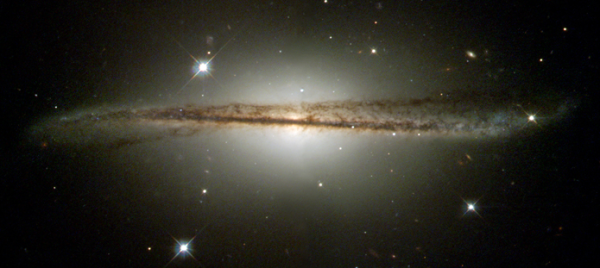PC358 - Extragalactic Astronomy and Cosmology
A study of the large scale structure of the universe and evolution of the universe from the Big Bang to the present epoch. Topics include expansion of the universe, dark matter, dark energy, cosmic background radiation and the formation and evolution of galaxies and clusters of galaxies. (Not offered 2025-26).
Prerequisite: Physics 251.
1 unit
Previously Featured Offering
Extragalactic Astronomy and Cosmology explores how the universe developed and how the myriad of exotic objects found in it work. The course will study our own galaxy, the workings of other galaxies, the universe as a whole, what the universe is made of, and try to predict its ultimate fate.

About 14 billion years ago, all of the universe that we see today was contained in a vanishingly small volume. Since then, the universe has expanded at a sometimes explosive rate. During the earliest epoch of expansion the universe increased in size by a factor of about 1043 in about 10-34 seconds! A few minutes after this exponential expansion the primordial atoms of hydrogen and helium were formed. As the universe expanded and cooled the atoms fell together and coalesced to form all that we see today—stars, galaxies, clusters of galaxies. Many galaxies contain supermassive black holes that power huge jets of material that spew from the galaxy's center. The universe contains a myriad of exotic objects. Understanding how the universe developed and how these exotic objects work is the goal of this course. We will start by studying our own galaxy and then explore the workings of other galaxies, and finally study the universe as a whole. We will try to understand how the universe developed, what it is made of, and try to predict it's ultimate fate.
Offerings
| Term | Block | Title | Instructor | Location | Student Limit/Available | Updated |
|---|---|---|---|---|---|---|
| Spring 2025 | Block 5 | Extragalactic Astronomy and Cosmology | Catherine Witherspoon | Barnes Science Center 219 | 25 / 18 | 08/11/2025 |
Report an issue -
Last updated: 08/11/2025



